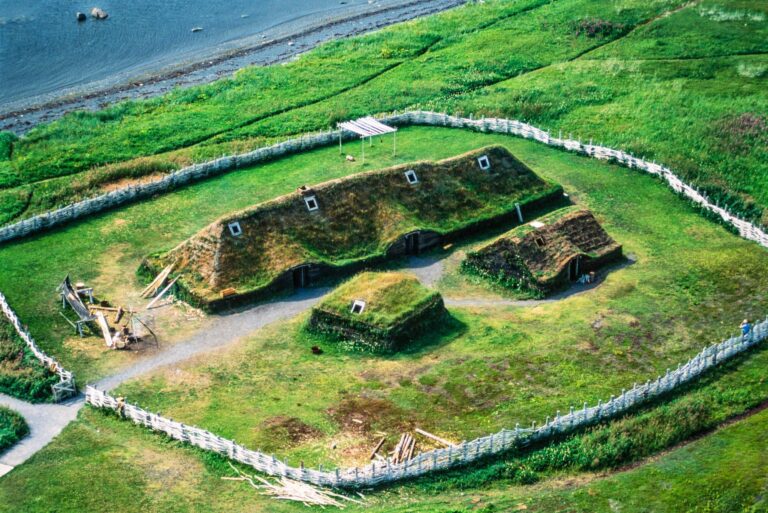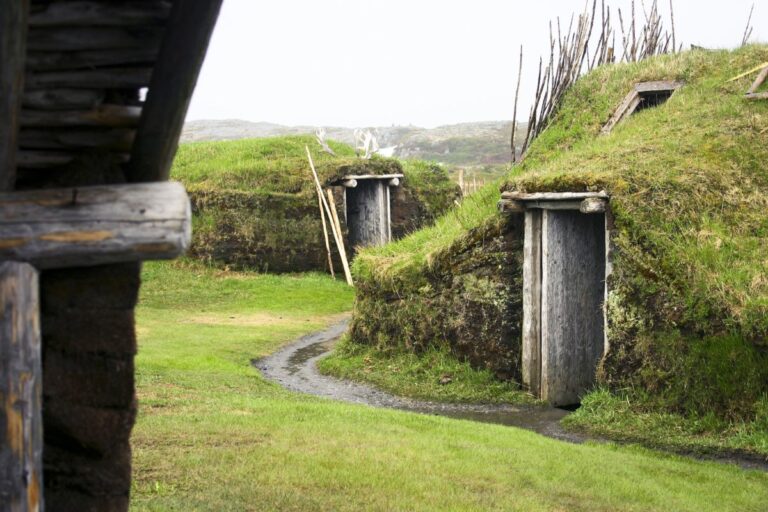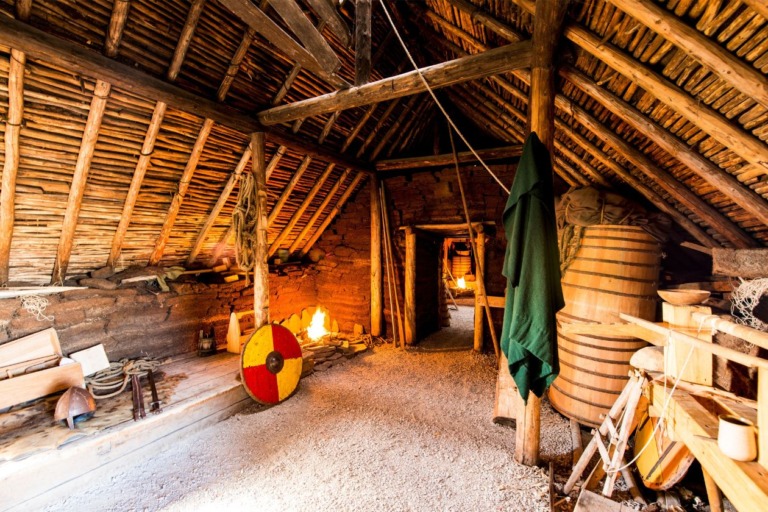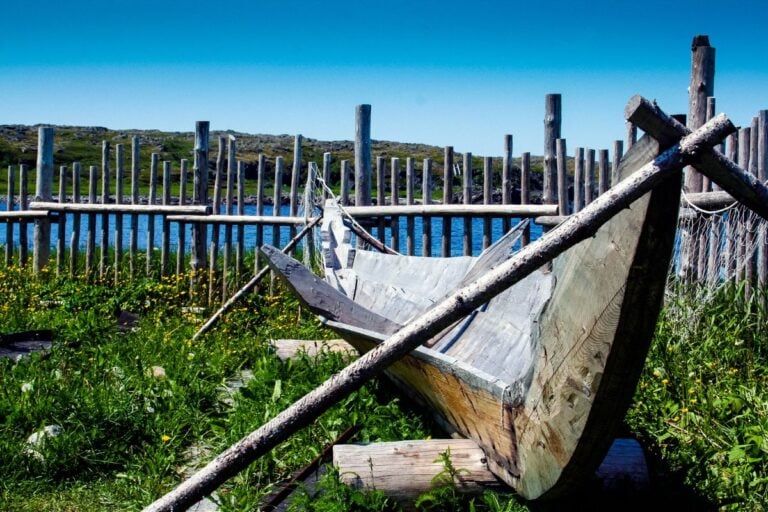The World Heritage site L’Anse aux Meadows in Newfoundland suggests that European Vikings reached North America centuries before Christopher Columbus.
While many people grew up with the narrative that Christopher Columbus was the first European to discover America, archaeological evidence unearthed in the 1960s paints a different picture.

Archaeological evidence found at the northern tip of Newfoundland proved that Europeans made it to North America in the 11th-century. That's hundreds of years earlier than previously thought.
Norse discovery in the 1960s
Helge Ingstad and Anne Stine Ingstad, a Norwegian husband-and-wife archaeologist team, made the ground-breaking discovery. The team had been searching for Vinland, mentioned in the Norse sagas and long speculated about.
As it means “Wine Land” in Old Norse, Vinland had been assumed to be farther south where grapes would grow. However, this translation has long been up for debate, with the archaeologists believing it meant “land of meadows.”
Locals led the team to a group of mounds near a small fishing hamlet, which locals had apparently long called the “old Indian camp.”

The remains of wood-framed, peat turf buildings discovered during the decade- long excavation work are similar to those found from the same time period in Greenland and Iceland. The area also corresponds to journeys outlined in the Norse sagas.
The only Norse site in North America
The 1960s discovery of the former Norse settlement at L’Anse aux Meadows forever changed our understanding of the Viking Age timeline.
Extensive archaeological research revealed timber-framed structures built with gabled roofs and covered with turf from the nearby peat bog. Both the building materials, construction style and layout of the buildings all followed characteristic Norse design.
Around 800 items of wood, bronze, bone and stone were discovered that shed light on the lifestyle of the settlers, while further confirming the Norse origin.
One of the first UNESCO World Heritage Sites
So important was the find to cultural heritage that L’Anse aux Meadows became one of world’s first 12 World Heritage sites when UNESCO began its program in 1978.

The program stated that L’Anse aux Meadows is “the first and only known site established by Vikings in North America and the earliest evidence of European settlement in the New World.”
It went to say that as such, “it is a unique milestone in the history of human migration and discovery.”
The protected area covers a much wider area than where the Norse remains were found. Archaeological sites have been reburied to protect the remains from degradation.
Visiting L’Anse aux Meadows today
Today, some of the original artifacts are on display at the site. But most of what visitors will see is a recreation of what the original camp would have looked like.
The reconstructions are based on archaeological evidence, similar settlements in Greenland and Iceland, and information contained within the Norse sagas.

Visitors are guided around the site by costumed Viking Age reenactors telling the story of L’Anse aux Meadows but also Viking Age life in general.
Some of this is done around a fire inside a reconstructed sod building, where you’ll hear both heroic and tragic tales of battles and Norse sagas.
The Viking Age camp allows visitors to see how blacksmiths and cooks worked, with reproductions of many tools and everyday items.
Inside the more traditional visitor center, original artefacts including a cloak fastening pin and bone needle are on display, together with 3D models, audio recordings of the sagas, and a 2/3-scale replica Viking boat.
Fans of escape rooms will be delighted to hear of Test of Tykir, the site’s very own twist on the popular activity. Booking in advance is essential for this attraction, inspired by the Vinland Sagas.


I like this, and read it every week. Tusen takk